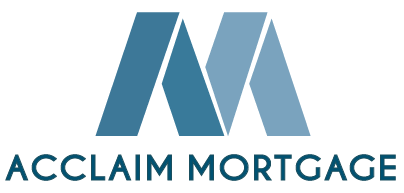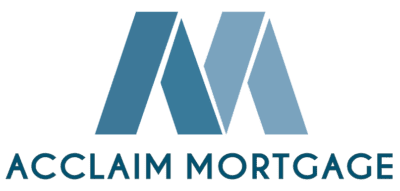Loan Programs
FHA Loans
FHA home loans are mortgage loans that are insured against default by the Federal Housing Administration (FHA). FHA loans are available for single family and multifamily homes. These home loans allow banks to continuously issue loans without much risk or capital requirements. The FHA doesn’t issue loans or set interest rates, it just guarantees against default.
FHA loans allow individuals who may not qualify for a conventional mortgage obtain a loan, especially first time home buyers. These loans offer low minimum down payments, reasonable credit expectations, and flexible income requirements.
VA Home Loans
The VA Loan provides veterans with a federally guaranteed home loan which requires no down payment. This program was designed to provide housing and assistance for veterans and their families.
The Veterans Administration provides insurance to lenders in the case that you default on a loan. Because the mortgage is guaranteed, lenders will offer a lower interest rate and terms than a conventional home loan. VA home loans are available in all 50 states. A VA loan may also have reduced closing costs and no prepayment penalties.
Additionally there are services that may be offered to veterans in danger of defaulting on their loans. VA home loans are available to military personal that have either served 181 days during peacetime, 90 days during war, or a spouse of serviceman either killed or missing in action.
Conventional Mortgages (FRM)
The traditional fixed rate mortgage, or conventional mortgage, is the most common type of loan program, where monthly principal and interest payments never change during the life of the loan. Fixed rate mortgages are available in terms ranging from 10 to 30 years and in most cases can be paid off at any time without penalty. This type of mortgage is structured, or “amortized” so that it will be completely paid off by the end of the loan term.
Even though you have a fixed rate mortgage, your monthly payment may vary if you have an “impound account”. In addition to the monthly “principal + interest” and any mortgage insurance premium (amount charged to homebuyers who put less than 20% cash down when purchasing their home), some lenders collect additional money each month for the prorated monthly cost of property taxes and homeowners insurance. The extra money is put in an impound account by the lender who uses it to pay the borrowers’ property taxes and homeowners insurance premium when they are due. If either the property tax or the insurance happens to change, the borrower’s monthly payment will be adjusted accordingly. However, the overall payments in a fixed rate mortgage are very stable and predictable.
Adjustable Rate Mortgages (ARM)
Adjustable Rate Mortgages (ARM)s are loans whose interest rate can vary during the loan’s term. These loans usually have a fixed interest rate for an initial period of time and then can adjust based on current market conditions. The initial rate on an ARM is lower than on a fixed rate mortgage which allows you to afford and hence purchase a more expensive home. Adjustable rate mortgages are usually amortized over a period of 30 years with the initial rate being fixed for anywhere from 1 month to 10 years. All ARM loans have a “margin” plus an “index.” Margins on loans typically range from 1.75% to 3.5% depending on the index and the amount financed in relation to the property value. The index is the financial instrument that the ARM loan is tied to such as: 1-Year Treasury Security, LIBOR (London Interbank Offered Rate), Prime, 6-Month Certificate of Deposit (CD) and the 11th District Cost of Funds (COFI).
When the time comes for the ARM to adjust, the margin will be added to the index and typically rounded to the nearest 1/8 of one percent to arrive at the new interest rate. That rate will then be fixed for the next adjustment period. This adjustment can occur every year, but there are factors limiting how much the rates can adjust. These factors are called “caps”. Suppose you had a “3/1 ARM” with an initial cap of 2%, a lifetime cap of 6%, and initial interest rate of 6.25%. The highest rate you could have in the fourth year would be 8.25%, and the highest rate you could have during the life of the loan would be 12.25%.
Hybrid ARMs
Hybrid ARM mortgages, also called fixed-period ARMs, combine features of both fixed-rate and adjustable-rate mortgages. A hybrid loan starts out with an interest rate that is fixed for a period of years (usually 3, 5, 7 or 10). Then, the loan converts to an ARM for a set number of years. An example would be a 30-year hybrid with a fixed rate for seven years and an adjustable rate for 23 years.
The beauty of a fixed-period ARM is that the initial interest rate for the fixed period of the loan is lower than the rate would be on a mortgage that’s fixed for 30 years, sometimes significantly. Hence you can enjoy a lower rate while having period of stability for your payments. A typical one-year ARM on the other hand, goes to a new rate every year, starting 12 months after the loan is taken out. So while the starting rate on ARMs is considerably lower than on a standard mortgage, they carry the risk of future hikes.
Homeowners can get a hybrid and hope to refinance as the initial term expires. These types of loans are best for people who do not intend to live long in their homes. By getting a lower rate and lower monthly payments than with a 30- or 15-year loan, they can break even more quickly on refinancing costs, such as title insurance and the appraisal fee. Since the monthly payment will be lower, borrowers can make extra payments and pay off the loan early, saving thousands during the years they have the loan.
2-1 Buydown Loans
A 2-1 buydown is a type of financing that lowers the interest rate on a mortgage for the first two years before it rises to the regular, permanent rate.
The rate is typically two percentage points lower during the first year and one percentage point lower in the second year.
Sellers, including home builders, may offer a 2-1 buydown to make a property more attractive to buyers.
2-1 buydowns can be a good deal for homebuyers, provided that they will be able to afford the higher monthly payments once those begin.
For more information, visit Investopedia.com.
Interest Only Mortgages
A mortgage is called “Interest Only” when its monthly payment does not include the repayment of principal for a certain period of time. Interest Only loans are offered on fixed rate or adjustable rate mortgages as wells as on option ARMs. At the end of the interest only period, the loan becomes fully amortized, thus resulting in greatly increased monthly payments. The new payment will be larger than it would have been if it had been fully amortizing from the beginning. The longer the interest only period, the larger the new payment will be when the interest only period ends.
You won’t build equity during the interest-only term, but it could help you close on the home you want instead of settling for the home you can afford.
Since you’ll be qualified based on the interest-only payment and will likely refinance before the interest-only term expires anyway, it could be a way to effectively lease your dream home now and invest the principal portion of your payment elsewhere while realizing the tax advantages and appreciation that accompany homeownership.
As an example, if you borrow $250,000 at 6 percent, using a 30-year fixed-rate mortgage, your monthly payment would be $1,499. On the other hand, if you borrowed $250,000 at 6 percent, using a 30-year mortgage with a 5-year interest only payment plan, your monthly payment initially would be $1,250. This saves you $249 per month or $2,987 a year. However, when you reach year six, your monthly payments will jump to $1,611, or $361 more per month. Hopefully, your income will have jumped accordingly to support the higher payments or you have refinanced your loan by that time.
Mortgages with interest only payment options may save you money in the short-run, but they actually cost more over the 30-year term of the loan. However, most borrowers repay their mortgages well before the end of the full 30-year loan term.
Borrowers with sporadic incomes can benefit from interest-only mortgages. This is particularly the case if the mortgage is one that permits the borrower to pay more than interest-only. In this case, the borrower can pay interest-only during lean times and use bonuses or income spurts to pay down the principal.
Reverse Mortgages
A reverse mortgage is a type of home equity loan that allows you to convert some of the existing equity in your home into cash while you retain ownership of the property. Equity is the current cash value of a home minus the current loan balance.
A reverse mortgage works much like a traditional mortgage, except in reverse. Instead of the homeowner paying the lender each month, the lender pays the homeowner. As long as the homeowner continues to live in the home, no repayment of principal, interest, or servicing fees are required. The funds received from a reverse mortgage may be used for anything, including housing expenses, taxes, insurance, fuel or maintenance costs.
To qualify for a reverse mortgage, you must own your home. You may choose to receive the reverse mortgage funds in a lump sum, monthly advances, as a line-of-credit, or a combination of the three, depending on the reverse mortgage type and the lender. The amount of money you are eligible to borrow depends on your age, the amount of equity in your home, and the interest rate set by the lender.
Because the borrower retains ownership of the home with a reverse mortgage, the borrower also continues to be responsible for taxes, repairs and maintenance.
Depending on the plan selected, a reverse mortgage is due with interest either when the homeowner permanently moves, sells the home, dies, or the end of a pre-selected loan term is reached. If the homeowner dies, the lender does not take ownership of the home. Instead, the heirs must pay off the loan, typically by refinancing the loan into a forward mortgage (if the heirs meet eligibility requirements) or by using the proceeds generated by the sale of the home.
Non-Qualified Mortgages (Non-QM)
A non-QM (Non-Qualified Mortgage) loan is a type of mortgage that does not meet the qualified mortgage guidelines set by the Consumer Financial Protection Bureau (CFPB). These guidelines were established as part of the Dodd-Frank Wall Street Reform and Consumer Protection Act in 2010 to ensure that lenders offer safer and more stable mortgage products to borrowers.
While qualified mortgages have specific requirements regarding the borrower’s ability to repay the loan, non-QM mortgages are designed for borrowers who may not meet those standard criteria. Non-QM loans are typically used for unconventional situations or borrowers with unique circumstances that make it difficult for them to qualify for traditional mortgage products.
Here are some key characteristics and features of non-QM mortgages:
- Flexible eligibility criteria: Non-QM loans provide more flexibility in qualifying criteria compared to qualified mortgages. Borrowers who are self-employed, have non-traditional income sources, or have low credit scores may find it easier to qualify for a non-QM loan.
- Alternative documentation: Non-QM lenders may accept alternative documentation to verify a borrower’s income and assets. This can be beneficial for self-employed individuals or those with complex financial situations who may have difficulty providing traditional proof of income, such as tax returns or pay stubs.
- Interest-only loans: Some non-QM mortgages offer interest-only payment options, where borrowers have the choice to pay only the interest on the loan for a specified period, typically 5 to 10 years. After the interest-only period ends, the borrower will need to start making principal and interest payments.
- Higher debt-to-income (DTI) ratios: Non-QM loans may allow higher DTI ratios compared to qualified mortgages. DTI ratio is the percentage of a borrower’s monthly gross income that goes towards debt payments. A higher DTI ratio means a borrower can allocate a larger portion of their income towards debt repayment.
- Jumbo loans: Non-QM mortgages are often used for jumbo loans, which are loans that exceed the conforming loan limits set by Fannie Mae and Freddie Mac. Jumbo loans are typically larger than the standard loan limits and are used for high-value properties.
- Higher interest rates: Non-QM loans generally carry higher interest rates compared to qualified mortgages. This is because non-QM loans are considered riskier for lenders due to the relaxed eligibility requirements and potentially less documentation. Borrowers should be prepared for higher borrowing costs when considering a non-QM mortgage.
- Portfolio lending: Non-QM loans are often held by the lender or placed in their own portfolio rather than being sold to government-sponsored entities (GSEs) like Fannie Mae or Freddie Mac. Portfolio lending gives lenders more flexibility to offer loans that don’t conform to the strict guidelines imposed by GSEs.
It’s important to note that non-QM loans are not subprime mortgages, which were a major contributor to the 2008 financial crisis. Non-QM loans have stricter underwriting standards compared to subprime mortgages and are designed to provide access to credit for creditworthy borrowers who don’t fit into the traditional mortgage box.


